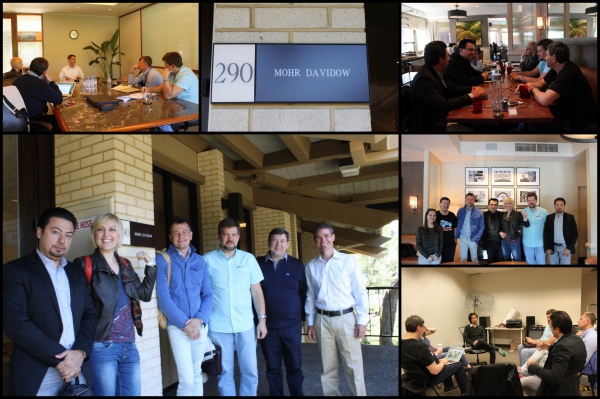On day three, we drove down to the famous Sand Hill Road in Menlo Park, well known for its concentration of venture capital companies. We were there to meet Jim Smith, General Partner at Mohr Davidow, an early stage VC fund. MD does seed, series A and series B investments, sometimes also later rounds. They are especially interested in consumer and enterprise software.
He started by saying that the dynamics of ventures is: you miss a lot! 20% may succeed, 80% will fail. He then taught us the difference between the investment rounds and what it means at MD:
- Seed investing: (usually between $100k and $2M): At this point, there is usually nothing more than an idea. You can see it as a loan to the company. MD gives the money as a convertible note and they get a discount on equity in the next investment series. About half of the seed funds transfer in Series A investments at MD. It is not like this in all funds, some invest in 100 companies and only expect one to do great.
- Series A: (around $5M - for about 20 to 25% of the company): In this round they have to finish the product and start winning the first customers.
- Series B: (between $10M and $15M): MD still participates but new investors are leading the round. Now they should really start to plan a sales model and also have some revenue traction, but it is important to keep the cash burn low, so you can make mistakes and changes fast and without big consequences.
- Series C: (between $20M and $25M): In this round MD still owns 25% of the company, but they only invest a few million in this round. Here they need to be growing at least 100%/year.
- Series D: (around $25M): Here MD mostly doesn't participate anymore.
This is the basis, but of course often things don't go as planned, so there are a lot of exceptions of this.
At MD, each fund has about 25 to 40 companies. They are now on fund 9.
The investors had some questions about how to join a fund, where MD invests and there were also some questions about exits.
It was very interesting to hear Jim's experiences and ideas and to learn more about how a successful fund such as Mohr Davidow works.
After the meeting with Jim, we went to the Menlo Park Grill for a lunch with Max Skibinsky. Max is a serial entrepreneur, angel investor and start-up mentor. He was the founder and CEO of Hive5, a social gaming company that was sold to Playdom/Disney. He is now a Venture Partner at Andreessen Horowitz. He talked about his experiences as an entrepreneur and investor. It was a nice lunch and great talk.
After lunch we drove back to San Francisco to meet with Marvin Liao at 500 Startups. Marvin is Venture Partner at 500 Startups, but before that he also did some angel investments. He started his career in e-commerce startup and after two years he joined Yahoo and worked there for 10 years. After he left Yahoo, he mentored at a lot of incubators and travelled the world meeting with startups. He knows a lot about startups, angel investing and investing as a fund.
 |
500 Startups is a seed venture company. They invest in startups with a working product and ideal some customers. They in general give 100K for about 5 to 7% of the company. Most of the time, they don't lead the round. As a venture partner, Marvin sees between 12 to 30 companies a week. He looks for a good product and a customer base: how well do you understand your customers.
The investors had a lot of questions for Marvin about incubators, when the best time to invest is and how do you know who to invest in.
Another great meeting, with a lot of new info to think about. A nice end to the third day, talking to three different funds, each with their own specialty and focus.
Live comment